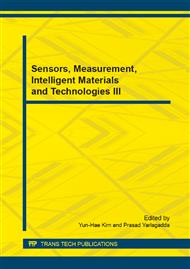p.334
p.339
p.344
p.350
p.354
p.361
p.366
p.373
p.377
A Residual Variance Based Discriminant Function and its Algorithm
Abstract:
Time series analysis is advantageous since it offers insight into the underlying dynamics and forecasts system behavior. The construction of the discriminant function is of vital importance in the time series analysis based fault diagnosis. Aiming at the problem that some of the time series analysis based fault diagnosis methods exist the weakness of higher time complexity, weaker discriminant ability and insufficient online diagnosis power, this paper proposes an approach which makes full use of the characteristics of the model and observation data to construct the discriminant function, and presents an efficient algorithm which can effectively recognize the system state by the proposed discriminant function. As compared to the related work, it has the characteristics of lower time complexity, shorter computation time and stronger distinguished ability, without the requirement of same orders of the reference model and the detected model. The fault diagnosis steps based on the proposed discriminant function and its algorithm are also suggested.
Info:
Periodical:
Pages:
354-360
Citation:
Online since:
March 2015
Authors:
Price:
Сopyright:
© 2015 Trans Tech Publications Ltd. All Rights Reserved
Share:
Citation:


